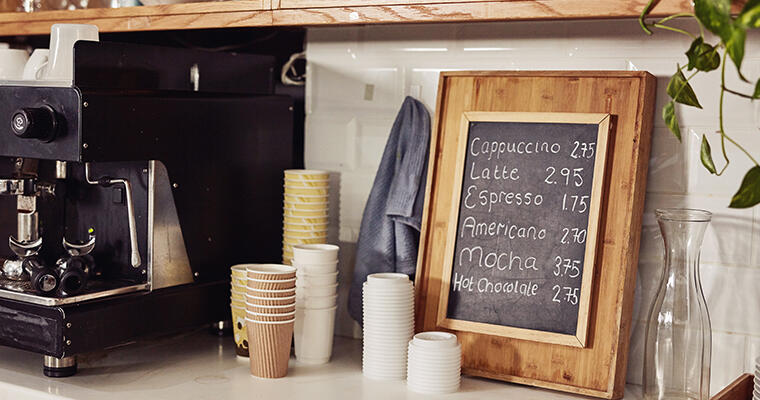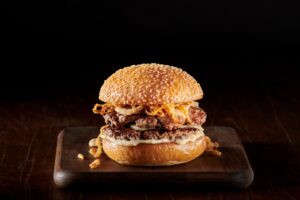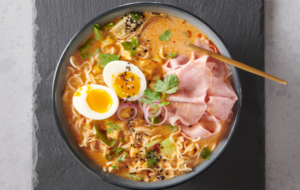You can have the best dinner menu in the world, all the awards and customers you can ask for, but if your restaurant loses track of its budget, you risk losing profits. One of the most important costs your restaurant should be calculating, tracking, and recalculating, is food costs.
As with anything math-related and unfamiliar, inventory or budget-related can feel a bit overwhelming. But that’s why we’re going to walk you through the formulas that will put you in control of your food costs. First, let’s dive into why calculating food costs is so important for restaurants in the first place.
Food cost & why it matters
In simple terms, food cost refers to the ratio between money spent on raw ingredients for menu items and the revenue generated from the sale of those dishes. Food cost (cost/sales) is usually expressed as a percentage, called a food cost percentage. Profitable restaurants usually land between 28% and 35% on food costs. Food cost calculations are important because they inform your menu pricing, not to mention if your restaurant is turning a profit. If food costs are off, even by a few cents, it could end up costing your restaurant thousands of dollars in revenue.
How to calculate food cost percentage
In order to calculate food cost percentage for your restaurant, you’ll need to gather a couple of different metrics. The first being, Cost of Goods Sold (COGS), aka, the money you spent on ingredients. To get this number, you follow the following formula:
Beginning Inventory + Purchased Inventory – Ending Inventory = COGS
If you are trying to calculate COGS from week to week, then your beginning inventory would be whatever leftover inventory you have from the week before. Purchased inventory is whatever additional raw goods you have coming in that week. Ending inventory is the inventory you have left after a full week of service. Inventory in both of these cases should account for seasonings, spices, oils, toothpicks–anything that contributes to the way the menu item meets the plate. The same thinking can be applied if you are trying to calculate month to month COGS and so on.
So for example, say your beginning inventory is $4,000, your purchased inventory is $10,000 and your ending inventory is $8,000, your COGS will end up being $6,000:
4,000 + 10,000 – 8,000 = 6,000
So now that you’ve got your COGS, you’ll want to get your total food sales for that week, and then use the following formula to get your food cost percentage:
COGS ÷ Total Food Sales = Food Cost Percentage
So taking the COGS from the example above, if your cost of goods sold is $6,000, and let’s say your total food sales is $20,000, then the food cost percentage comes out to .30 or 30%:
6,000 ÷ 20,000 = .30 (30%)
Ideal food cost percentage
Now, the way you really make an impact with food cost percentage is by comparing it with an ideal food cost percentage. Think of your ideal food cost as what your restaurant’s food cost percentage would be in a utopia–an alternate universe where food doesn’t spoil, orders are never rung up incorrectly, inventory is never subjected to theft, etc.
To find your ideal food cost percentage, you need to calculate your restaurant’s total food cost (the raw ingredients you use to make each dish) divided by your total food sales:
Total Food Cost ÷ Total Food Sales = Ideal Food Cost Percentage
Total food cost is different than COGS because it only takes into account the materials used to make each menu item–not the total inventory. You need to be able to look at the total cost per dish, then multiply it by however many times the menu item is made. The sum of the cost of all your menu items fired that week is your total food cost.
So, for example, if your total food cost is 5,600 and your total food sales for that week is 20,000, then your ideal food cost percentage would be 28%:
5,600 ÷ 20,000 = .28 (28%)
Comparing these food cost percentage (30%) and the ideal food cost (percentage), you can see that your costs are about 2% over where you would like them to be. With this knowledge, you can begin making adjustments to your inventory sourcing, your menu pricing, food portion, etc. to bring your food cost percentage down and your profits up.
How to calculate food cost by menu item
If you want to get more granular, you can do this same comparative process on a menu item by menu item level. All you need to do is first calculate the food cost per dish. Do this by finding the food cost of ingredients needed to make a menu item and then multiply it by how many times the dish sold:
Food Cost of Ingredients x Amount Sold = Total Food Cost Per Dish
Then, divide the food cost per dish by the sales driven by that menu item:
Total Cost Per Dish ÷ Total Sales Per Dish = Ideal Food Cost Percentage
And again, this can be done looking at a weekly, monthly, etc. time period. You can calculate the COGS for a menu item using the same formula we used before, but swapping in inventor information specific to the menu item.
How to improve food cost percentage
In 2019, 52% of restaurant owners said that one of their top challenges is high operating and food costs. Evaluating your ideal food costs against your food cost percentage is a way to combat this common hurdle. When you see discrepancies in percentages, then it’s time to reevaluate some things on your menu.
Here are a couple of ways you can take action to optimize your food cost percentage:
- Try raising menu item pricing by a small amount, even just by cents.
- See where you can integrate more carbs. Potatoes, pasta, rice, etc. generally have lower margins when bought in bulk and are more shelf-stable.
- Speaking of bulk, review your wholesale accounts. Shop around and make sure you’re getting the best pricing for quality ingredients.
- Revisit your menu design. Strategically highlight menu items that have better food cost percentages to encourage guests to order.
- Pay attention to how dishes are getting bussed. Is the food coming back half-eaten? Is there a side that never gets touched? Think about revisiting portion size and plating to cut back on costs.
And remember, the impact of these changes can be huge for your profits. Think about it this way, if you serve 100 customers in a day, and your menu is miss priced by just 50 cents, then that $50 you’re losing every day. Raising prices even by small increments is just one way you can achieve better food cost percentages.
Back of House is an independent, unbiased platform helping operators find and filter the solutions they need to succeed.

























